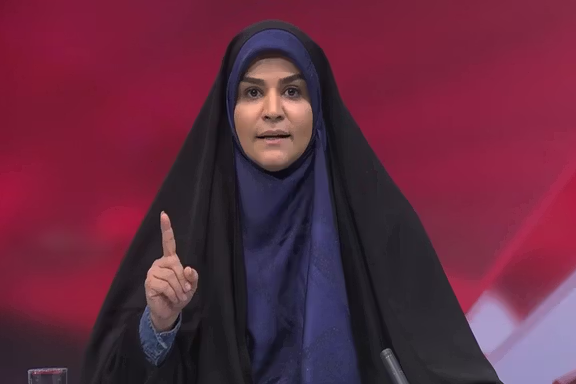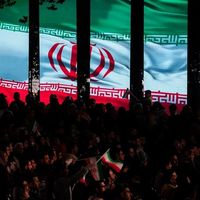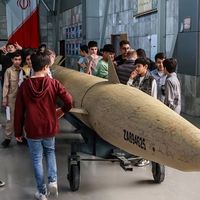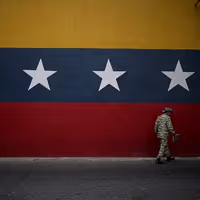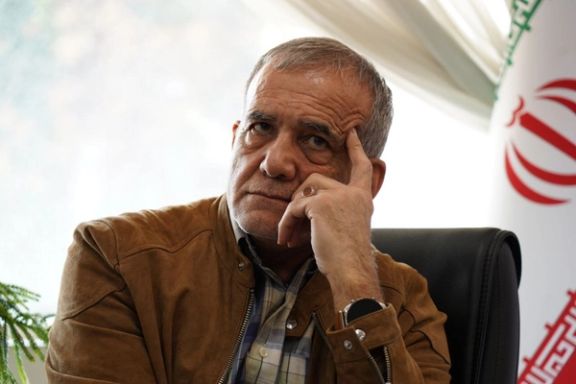Sudan may serve as a gateway for rearming groups like Hamas, as Tehran’s so-called Axis of Resistance has been weakened by military and political losses, Danny Citronowicz, head of the Iran and Shia Axis program at Israel’s Institute for National Security Studies told Iran International.
“We have to pay attention to Iranian entrenchment in Sudan. (The Iranians) are working hard to build a base there. Recent reports indicate they are selling drones to the Sudanese army to strengthen their foothold," he said.
"Sudan has been a crucial waypoint for Iran to smuggle arms to Hamas,” Citronowicz added. “Iran’s activity in Africa, especially the eastern region, is significant. Sudan is key if they want to rearm Hamas again.”
Khartoum began to expel Hamas-linked operatives following the ouster of longtime Islamist President Omar al-Bashir in 2019, as new authorities mended ties with the West and inked a normalization accord with Israel.
Sudan’s ongoing civil war has reshaped its political landscape, unleashing deadly chaos and barely governed swathes of contested lands in which some Islamist groups have thrived.
Last year, Israel reportedly considered exiling the assassinated Hamas leader Yahya Sinwar from Gaza to Sudan before he was ultimately killed in a drone attack.
Earlier this year, Sudanese and Israeli media reported discussions about relocating Hamas leadership to Sudan, a possibility that could gain traction following recent Israeli airstrikes on Hamas bases in Qatar.
Red Sea combat
Behnam Ben Taleblu, an Iran expert at the US-based Foundation for Defense of Democracies, said the Red Sea remains a critical focus for Tehran and the Iran-allied Houthi group in Yemen have traded blows for nearly two years.
“Tehran has doubled down on the Houthis while rebuilding ties in Africa, particularly in war-torn Sudan. The Red Sea’s importance has grown due to Houthi maritime and aerial campaigns,” he told Iran International.
Iran reestablished relations with Khartoum in late 2023 as Sudan’s army, led by General Abdel Fattah al-Burhan, struggled against the paramilitary Rapid Support Forces during the ongoing civil war.
Arash Azizi, Iran expert and author of What Iranians Want: Woman, Life, Freedom, said Sudan’s conflict provides Tehran a strategic opportunity. However, Sudan’s recognition of Israel under the 2020 US-brokered Abraham Accords remains a barrier.
“Iran’s gambit will have limited results because Khartoum has not reversed the 2020 recognition of Israel. Burhan is reportedly seeking a new deal with Israel,” Azizi said.
A foothold in Sudan also challenges Iran’s Persian Gulf rivals, the United Arab Emirates and Saudi Arabia, which are deeply involved in the civil war.
Sudan’s 530-mile coastline offers Tehran a route to regain influence in the Red Sea and support the Iran-backed maritime blockade by the Houthis, which started in November 2023.
Tehran has supplied combat drones, munitions and intelligence in the urban conflict, which has killed thousands of civilians. US authorities accuse Iran of supporting the Islamist Ibn Malik battalion.
Since the October 7, 2023 in which 1,200 Israelis were killed and over 200 dragged back to Gaza in captivity, Iran’s allies have suffered major blows in fighting which has flared around the Middle East.
Israel’s ground incursion and air attacks on Gaza aimed to retrieve hostages and destroy Hamas, which seized control of the Strip in 2007.
Large portions of Gaza were destroyed and over 67,000 people killed according to local health authorities and much of the population displaced.
Waning fortunes
Iran lost its foothold in Syria last year when President Bashar Assad was toppled, leaving Tehran without easy conduits to enervated allies Hamas and Hezbollah.
Hezbollah was sapped by Israeli attacks targeting military infrastructure and leadership, including slain leader Hassan Nasrallah. A US-France-brokered ceasefire has increased international pressure to disarm the group.
In Iraq and Syria, Iranian allies conducted limited strikes toward Israel, while Iran continues arming Palestinian militias in the West Bank. The Houthis in Yemen also turned into the most active threat during the Gaza war, launching drones and missiles nearly daily.
“In general, the axis hasn’t achieved its intended deterrence against Israel. Unless we talk about the Houthis, they are unlikely to intervene in future conflicts,” Citronowicz said.
However, missile supplies dwindled as shipments from Iran were increasingly intercepted, forcing groups to rely more on drones.
British military expert Andrew Fox noted that Hamas remains the primary surviving element of Iran’s weakened network.
“Hezbollah is now a local militia, the Houthis are a minor nuisance, Iraqi militias have declined to participate," he said. "Only Hamas retains significant capability.”

